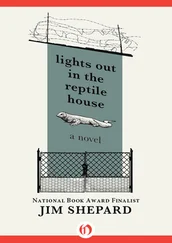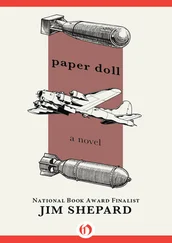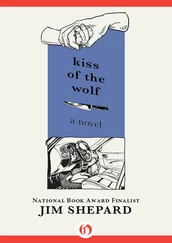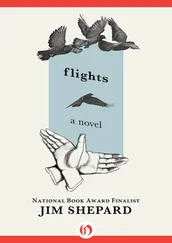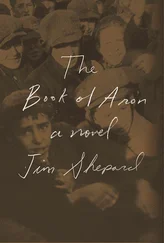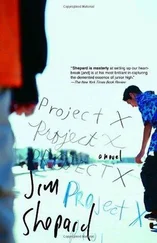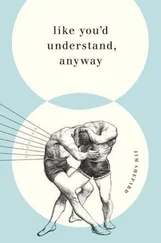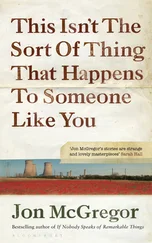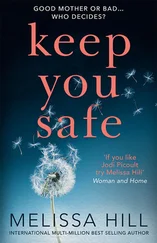That night she informed Tsuburaya that she considered their son’s request a bad idea, at least for the time being; that he should stay in school; that he didn’t need additional training in how to ignore his family. Tsuburaya felt the need to defend his profession.
“Well, at least promise you’ll do nothing without consulting me,” she finally requested.
“Who Toho hires is none of your concern,” he reminded her.
“What you do with our son is my concern,” she answered. And neither of them pursued the matter after that.
When Mori and Honda first approached him, he’d been thrilled at the prospect after all of those years of finally being able to work on the kind of stop-motion effects he had so admired in King Kong . But when Mori asked him to write up a projected preproduction and shooting schedule for his unit, even after every shortcut he could conceive, he was forced to report that to do the job right he would need a little less than seven years. On the phone he could hear Mori repeating what he’d said to the others in his office, and there was a general hilarity in the background. When Mori returned to the line he was still chuckling. He said he could give Tsuburaya two months for preproduction and another two for shooting.
That left Tsuburaya’s department with few options other than what they knew best: miniature building. Which was what everyone expected of him anyway.
His big break had come when Toho was urged by the government during the war to pour nearly all of its resources into The War at Sea , the epic charged with the task of persuading the public that the new war with the Americans was one the Japanese could win. Using photographs supplied by the navy, his unit had recreated Pearl Harbor on a six-acre outdoor set on Toho’s backlot, and had done so with such persuasive detail that the footage of the attack on Battleship Row was confiscated by U.S. occupation officials after the war because they’d taken it to be real. The movie returned the highest grosses ever recorded in Japan, tripled his budgets and staff, and ensured that anyone in the country with a special-effects problem would seek out the celebrated Tsuburaya.
So if on this new project O’Brien’s solutions were denied to them, it meant only that they had to approach the situation in a new way. This didn’t dishearten them, since they already understood that whenever fixed rules were applied to a problem, only parts of it might be perceived. They operated on the principle that you weren’t ready for a task until you admitted it was beyond you.
He came up with the idea of an entire 1/25 scale miniature set of the capital, detailed inside as well as out in order to be convincing when trampled. Breakaway walls would reveal entire floors with all of their furnishings when the monster sheared away the outside surfaces. Various aspects of the city’s infrastructure, such as mailboxes or street lamps, would be rendered in wax and melted by huge offscreen heat lamps to simulate the monster’s radioactive breath. Small and precisely calibrated pyrotechnic charges would be installed to reproduce the explosive destruction as fuel and automobile gas tanks ignited.
And 1/25 scale would allow a monster of the proper size to be generated by simply putting a man in a suit.
The simplicity of the plan held enormous appeal. He’d always been drawn to the handmade approach, and of course the studio appreciated the relative lack of expense. Something made from nothing was how he liked to put it.
Mori and Honda loved the budget and feared the plan. A man in a suit? Tsuburaya only shrugged at their unease. They either trusted him or they didn’t. Proof was stronger than argument.
The day after the logistical catastrophe, Honda called to report that he’d handled it without Tsuburaya’s help. Honda was probably Tsuburaya’s closest friend, though at that suggestion Masano once responded that she would love to see Honda’s face when someone told him as much. Honda was forever sporting an American’s rumpled little fishing hat and was fond of walking great distances. He and Tanaka met when hiking the Diamond Mountains in Korea in the early thirties. Mori and Tanaka had both thought Honda would be the perfect director for this new project since he’d had so little trouble with all the visual effects in Eagles of the Pacific , and had worked so well with Tsuburaya. Having been a longtime assistant to Kurosawa, he was experienced in dealing with lunatic perfectionists. “Or, in other words, Tsuburaya,” Mori had said at their first full staff meeting.
They also liked that Honda had no patience for storylines that dawdled. They’d handed a first attempt at the script to the mystery writer Kayama and what he’d produced was far too tame, involving a nondescript dolphinlike creature that attacked only fishing boats and only to feed its insatiable hunger. Most of the story had involved the poor thing swimming this way and that in search of food.
Honda had clear-cut Kayama’s script, demanding something terrible enough to evoke both the fire raids on Tokyo and the bombings of Hiroshima and Nagasaki. He’d served three tours of duty as an infantryman, had been a prisoner of war in China, been repatriated near Hiroshima, and then had wandered the devastation three months after the surrender.
He thought much like Tsuburaya did: that the director, like a department head, had to include in his leadership the responsibility to protect the artisans under his umbrella. And, of course, to recruit those artisans. And where were they to be found? They had to have the right sensibility toward beauty, sufficient technical training and scientific knowledge, and a strong will, passion, and creative talent.
Honda claimed he drew his belief in himself from the soil of his life experience. His mother had also died when he was small, and his father soon afterward. He’d been left unable to attend school and had taught himself to read while carrying firewood for his neighbors. He knew that encountering the unfamiliar might involve many errors before a solution was found, and he had an intuition that seemed to draw on an extraordinary visual resourcefulness. When he loved something, he’d exclaim, “Oh, this is spring water!” Again like Tsuburaya, he knew that the craftsman worked with and for his world, but ultimately went his own way, not seeking praise. When Eagles of the Pacific premiered, Honda was on a little lake, fishing. Because the objects themselves were one’s best signature.
As a young man, Tsuburaya had been struck by how different the Japanese hand was from the big, untrained hands of the other races. Masano had a calligrapher’s hands, long-fingered and tapering, and he’d been seduced by their dexterity and sensitivity when watching her set out her simple gifts for him in the hospital. The daughter of a Kyoto engineering magnate, she was fond of movie stars and thanks to her father’s influence, was touring the studio when the camera crane Tsuburaya had invented collapsed and he crashed to the floor in front of her. The shattered lens shield had slightly cut her forehead but even so she cradled his face and neck while his assistants came running. She later claimed he’d reached up to touch her injury, but he had no memory of that. On the same afternoon she’d appeared in his hospital room, bearing her gifts, and remaining behind after everyone else had left. They’d married a year later, when she was nineteen.
Their courtship had mostly taken the form of long-distance love notes, in which Tsuburaya found a courage of expression based on longing and the safety of isolation. All of us , he wrote later: when we make a little progress, we’re captivated by our cleverness .
Their feelings were an act of faith, just as the sublimity of an artisan’s pot was a gift and not a calculation. They gave themselves over to those feelings the way lips kissed the thickness of a tea bowl’s rim.
Читать дальше

